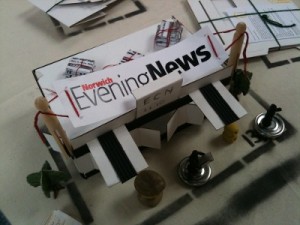Facebook is a simulation game.
Hear me out. This is the culmination of quite a long period of mashing obscure concepts into my brain and seeing what sticks. If it doesn’t make sense, please rip it apart in the comments.
Sim Social is a massive multi-user dungeon (MUD) about building an identity, which you do by making “friends”, “sharing” digital artefacts (photos, videos, links, text), and “liking” things – objects, concepts, individuals, brands, the aforementioned digital artefacts. It’s played in real time with real people, and the level to which you decide to play yourself or a character is entirely up to you.
It functions, in a way, like old-school text adventure games. At a basic level, text games let the player use verb noun combinations – “get sword”, “kill snake”, “drink potion” – to act on the game world and progress the game. The verbs involved tend to be very limited and to have strictly defined fields of action. So for instance “get” is a one-time-only action which only works on a particular class of object. It changes the status of that object from being in the game world to being in the player’s inventory, and it opens up the possibility of further actions – “get sword” leads to “use sword”, or in slightly more sophisticated games, “kill snake with sword”.
“Get sword” and “friend Mary” function in fascinatingly similar ways. From your perspective, “Mary” is lying around in the game space – you might come across her through both interacting with certain things (like being in the same room of the MUD at the same time) or you might go into the game specifically looking for “Mary” because you know that she’s there and you want her to be part of your experience on Sim Social. So you find her, and you friend her, and now she’s in your inventory and you can do other things with her, like tag her in photos or get access to her status updates.
This is not to imply, of course, that people are things. But the way Facebook’s interaction is set up – the rules it imposes on the simulation – does imply certain things about the game world.
That’s not a new thought. Ian Bogost talks about the procedural rhetoric of video games – the explicit or implicit arguments that games make about how something works, simply by modelling processes. And George Lakoff, in his work on conceptual metaphor, argued that the metaphors we use define the potential field of action. The language used to discuss something defines how we think and talk about it.
So Facebook (as a text) argues, increasingly with the Like button takeover of Share functions, that if I “like” or “recommend” something (one-directional relationships, indistinguishable from each other, in which ambiguity cannot be expressed) then I must also want to “share” it. And, with the new comment plugin, it gives site owners the opportunity to argue that if I comment on their work I must also “share” it with all my “friends”; that I must be non-anonymous; that I must want to be notified of responses.
By casting a certain interaction in the metaphorical field of “friendship”, and by modelling the processes of “being friends” in a certain way, Facebook (as a game, as a text) makes an argument about socialisation and about relationships in the real world. So does Twitter. So do most social apps.
Facebook, in particular, lays claim to metaphors of relationship, interest and appreciation through the verbs it uses to describe and interact within the game world; it makes wider arguments about identity and privacy too. It simulates building relationships on a deeper level than SimCity simulates city-building, sure, but both exist on a continuum where complex social processes are modelled with certain assumptions built in.
Mark Sample talks about close-reading SimCity, looking at the rhetoric of its models, and unpacking the underlying assumptions behind the simplistic assertion that tax increases cause crime. I’d like to do that with Facebook, if the code was more open, but there are plenty of open assumptions to unpack – Is “liking” something the same thing as “recommending” it? What’s a “friend”? Can identities fluctuate? Facebook has an opinion on these things.
And a closing, background thought is something half-remembered from Shelly Turkle’s Simulation and its Discontents, which is referred to by Play the Past here:
Sherry Turkle tells us about a 13 year old SimCity player who told her about the “Top Ten Rules of SimCity.” One of those rules was that “raising taxes leads to riots.” Now, if the adolescent had simply understood this as a rule in the model, it would be fine, but Turkle insists that the adolescent did not understand that the simulation was a simplification. Turkle claims that this adolescent had uncritically extrapolated a set of rules she used to understand society from SimCity. The claim is that the 13 year old did not understand the game as a model or a toy but instead saw it as a kind of direct representation of the world. In a world increasingly dependent on simulation as basis of knowledge it is important for us to begin to become literate.





